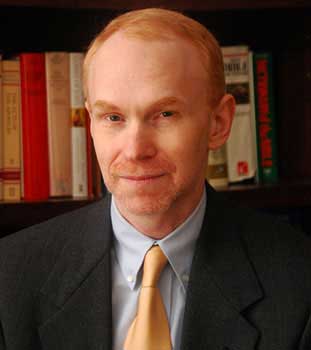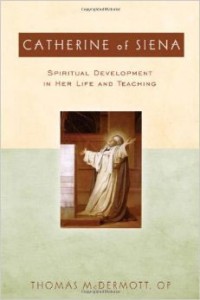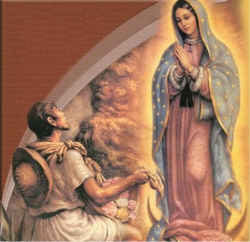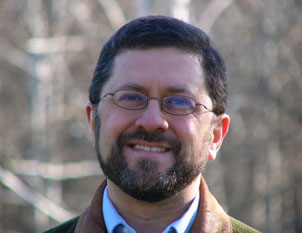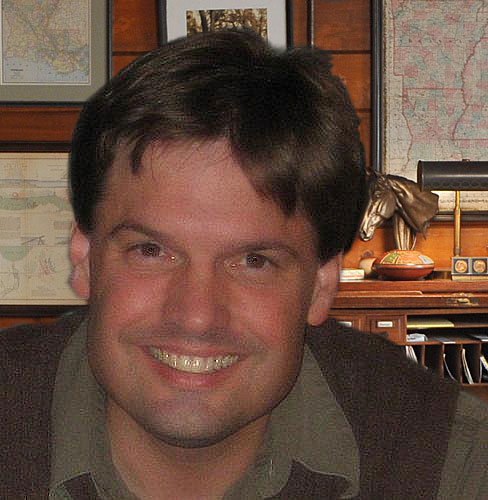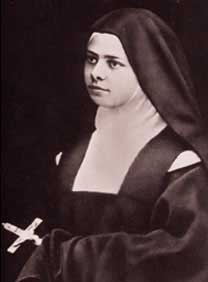Dr. Matthew Bunson discusses the life, times and teachings of St. Peter Chrysologus
-
Born: 406 AD, Imola, Italy
-
Died:Â July 31, 450 AD
Peter was born in Imola, where Cornelius, bishop of Roman Catholic Diocese of Imola, baptized him, educated him, and ordained him a deacon. He was made an archdeacon through the influence of Emperor Valentinian III. Pope Sixtus III appointed Peter as Bishop of Ravenna (or perhaps archbishop) circa 433, apparently rejecting the candidate whom the people of the city ofRavenna elected. The traditional account, as recorded in the Roman Breviary, is that Sixtus had a vision of Pope Saint Peter the Apostle and Saint Apollinaris of Ravenna, the first bishop of that see, who showed Sixtus a young man, the next Bishop of Ravenna. When a group from Ravenna arrived, including Cornelius and his archdeacon Peter from Imola, Sixtus recognized Peter as the young man in his vision and consecrated him as a bishop.
People knew Saint Peter Chrysologus, the Doctor of Homilies, for his short but inspired talks; he supposedly feared boring his audience. His piety and zeal won universal admiration. After hearing oratory of his first homily as bishop, Roman Empress Galla Placidia supposedly gave him the surname Chrysologus, meaning “golden-worded.” Empress Galla Placidia patronized many of projects of Bishop Saint Peter.
In his extant homilies, bishop Peter explained Biblical texts briefly and concisely. He also condemned Arianism and Monophysitism as heresies and explained beautifully the Apostles’ Creed, the mystery of the Incarnation, and other topics in simple and clear language. He dedicated a series of homilies to Saint John the Baptist and the Blessed Virgin Mary. Peter advocated daily reception of Eucharist. He urged his listeners to confide in the forgiveness offered through Christ. He shared the confidence of Saint Pope Leo I the Great (440-461), another doctor of the Church.
A synod held in Constantinople in 448 condemned Eutyches for Monophysitism; Eutyches then appealed to Saint Peter Chrysologus but failed in his endeavour to win the support of the Bishop. The Acts of the Council of Chalcedon(451) preserves the text of letter of Saint Peter Chrysologus in response to Eutyches; Peter admonishes Eutyches to accept the ruling of the synod and to give obedience to the Bishop of Rome as the successor of Saint Peter.
Archbishop Felix of Ravenna in the early eighth century collected and preserved 176 of his homilies. Various authors edited and translated these works into numerous languages.
Death and veneration
St Peter died circa or after 450 during a visit to Imola, the town of his birth. Older reference books say he died on 2 December, but a more recent interpretation of the ninth-century “Liber Pontificalis Ecclesiae Ravennatis” indicated that he died on 31 July. When in 1729 he was declared a Doctor of the Church, his feast day, not already included in the Tridentine Calendar, was inserted in the Roman Catholic calendar of saints for celebration on 4 December. In 1969 his feast was moved to 30 July, as close as possible to the day of his death, 31 July, the feast day of Saint Ignatius of Loyola.
Dr. Matthew Bunson, Senior Fellow of the St. Paul Center for Biblical Theology, is one of the United States’ leading authorities on the papacy and the Church.
His books include: The Encyclopedia of Catholic History; The Encyclopedia of Saints; Papal Wisdom; All Shall Be Well; Encyclopedia of the Roman Empire; and The Angelic Doctor: The Life and World of St. Thomas Aquinas; The Pope Encyclopedia; We Have a Pope! Benedict XVI, the first Catholic biography of the Holy Father in the English language; the Encyclopedia of U.S. Catholic History; Pope Francis. His also the editor of OSV’s “The Catholic Answer” magazine.
Tags: matthew bunson, st peter chrysologus
This entry was posted on Monday, January 27th, 2014 at 10:51 am
You can follow any responses to this entry through the RSS 2.0 feed.
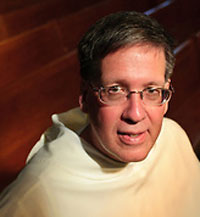 Episode 2 St. Catherine of Siena:  Her Life and Teachings with Fr. Thomas McDermott-
Episode 2 St. Catherine of Siena:  Her Life and Teachings with Fr. Thomas McDermott-
[powerpress]
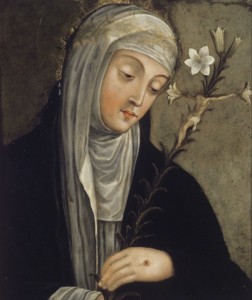 In this episode, Fr. McDermott discusses the difference between solitude and isolation by means of moments in St. Catherine’s life.
In this episode, Fr. McDermott discusses the difference between solitude and isolation by means of moments in St. Catherine’s life.
 What is a “Third Order” and why did St. Catherine choose this means to live out her life?  A dream affected St. Catherine deeply.  Fr. McDermott teaches how we can discern dreams that might occur in our lives. Â
Why would St. Catherine have a special devotion to St. Mary Magdalene?  Fr. McDermott discusses the significance of the “fundamental maxim” and the imagery of  “the well”, and the times of temptation that began to occur in her life and the experience of “The Dark Night of Self-Knowledge”.
Fr. Thomas McDermott, OP is Regent of Studies for the Dominican Province of St. Albert the Great and is the author of “Catherine of Siena: Spiritual Development in Her Life and Teaching” (Paulist, 2008) and  “Filled with all the Fullness of God: An Introduction to Catholic Spirituality”.  He obtained a doctorate in spiritual theology from the Angelicum and taught for several years at Kenrick-Glennon Seminary in St. Louis.  He crrently serves as pastor at St. Vincent Ferrer, in Chicago, IL.
Our series is based on “Catherine of Siena”
by Fr. McDermott
Tags: St. Catherine, Thomas McDermott
This entry was posted on Sunday, January 26th, 2014 at 1:08 am
You can follow any responses to this entry through the RSS 2.0 feed.
Dr. Matthew Bunson discusses the life, times and teachings of St. Leo the Great
Aware of the historical period in which he lived and of the change that was taking place – from pagan Rome to Christian Rome – in a period of profound crisis, Leo the Great knew how to make himself close to the people and the faithful with his pastoral action and his preaching. He enlivened charity in a Rome tried by famines, an influx of refugees, injustice and poverty. He opposed pagan superstitions and the actions of Manichaean groups. He associated the liturgy with the daily life of Christians:Â for example, by combining the practice of fasting with charity and almsgiving above all on the occasion of the Quattro tempora, which in the course of the year marked the change of seasons. In particular, Leo the Great taught his faithful – and his words still apply for us today – that the Christian liturgy is not the memory of past events, but the actualization of invisible realities which act in the lives of each one of us. This is what he stressed in a sermon (cf. 64, 1-2) on Easter, to be celebrated in every season of the year “not so much as something of the past as rather an event of the present”. All this fits into a precise project, the Holy Pontiff insisted:Â just as, in fact, the Creator enlivened with the breath of rational life man formed from the dust of the ground, after the original sin he sent his Son into the world to restore to man his lost dignity and to destroy the dominion of the devil through the new life of grace.
This is the Christological mystery to which St Leo the Great, with his Letter to the Council of Ephesus, made an effective and essential contribution, confirming for all time – through this Council – what St Peter said at Caesarea Philippi. With Peter and as Peter, he professed:Â “You are the Christ, the Son of the living God”. And so it is that God and man together “are not foreign to the human race but alien to sin” (cf. Serm. 64). Through the force of this Christological faith he was a great messenger of peace and love. He thus shows us the way:Â in faith we learn charity. Let us therefore learn with St Leo the Great to believe in Christ, true God and true Man, and to implement this faith every day in action for peace and love of neighbour.
For more visit Vatican.va
Dr. Matthew Bunson, Senior Fellow of the St. Paul Center for Biblical Theology, is one of the United States’ leading authorities on the papacy and the Church.
His books include: The Encyclopedia of Catholic History; The Encyclopedia of Saints; Papal Wisdom; All Shall Be Well; Encyclopedia of the Roman Empire; and The Angelic Doctor: The Life and World of St. Thomas Aquinas; The Pope Encyclopedia; We Have a Pope! Benedict XVI, the first Catholic biography of the Holy Father in the English language; the Encyclopedia of U.S. Catholic History; Pope Francis. His also the editor of OSV’s “The Catholic Answer” magazine.
Tags: matthew bunson, pope benedict xvi
This entry was posted on Thursday, January 23rd, 2014 at 11:17 am
You can follow any responses to this entry through the RSS 2.0 feed.
 Episode 1 St. Catherine of Siena:  Her Life and Teachings with Fr. Thomas McDermott-
Episode 1 St. Catherine of Siena:  Her Life and Teachings with Fr. Thomas McDermott-
[powerpress]
 In this introductory episode, Fr. McDermott discusses the person of Blessed Raymond of Capua, O.P., (ca. 1330 – 5 October 1399), who was a leading member of the Dominican Order, served as its Master General from 1380 until his death, and was confessor and biographer of St. Catherine.  Fr. McDermott talks about the importance of having the Dominican perspective when looking at the accounts of St. Catherine’s life.  Her family and early childhood, including her first mystical experience, are then discussed.
In this introductory episode, Fr. McDermott discusses the person of Blessed Raymond of Capua, O.P., (ca. 1330 – 5 October 1399), who was a leading member of the Dominican Order, served as its Master General from 1380 until his death, and was confessor and biographer of St. Catherine.  Fr. McDermott talks about the importance of having the Dominican perspective when looking at the accounts of St. Catherine’s life.  Her family and early childhood, including her first mystical experience, are then discussed.
Fr. Thomas McDermott, OP is Regent of Studies for the Dominican Province of St. Albert the Great and is the author of “Catherine of Siena: Spiritual Development in Her Life and Teaching” (Paulist, 2008) and  “Filled with all the Fullness of God: An Introduction to Catholic Spirituality”.  He obtained a doctorate in spiritual theology from the Angelicum and taught for several years at Kenrick-Glennon Seminary in St. Louis.  He crrently serves as pastor at St. Vincent Ferrer, in Chicago, IL.
Our series is based on “Catherine of Siena”
by Fr. McDermott
Tags: catherine of siena, st catherine of siena, Thomas McDermott
This entry was posted on Monday, January 13th, 2014 at 11:07 am
You can follow any responses to this entry through the RSS 2.0 feed.
The Living Flame Of Love
 Songs of the soul in the intimate communication of loving union with God.
Songs of the soul in the intimate communication of loving union with God.
[powerpress]
1. O living flame of love
that tenderly wounds my soul
in its deepest center! Since
now you are not oppressive,
now consummate! if it be your will:
tear through the veil of this sweet encounter!
2. O sweet cautery,
O delightful wound!
O gentle hand! O delicate touch
that tastes of eternal life and pays every debt!
and pays every debt!
In killing you changed death to life.
3. O lamps of fire! in whose splendors
the deep caverns of feeling,
once obscure and blind,
now give forth, so rarely, so exquisitely,
both warmth and light to their Beloved.
4. How gently and lovingly
you wake in my heart,
where in secret you dwell alone;
and in your sweet breathing,
filled with good and glory,
how tenderly you swell my heart with love.
Here is a fine teaching from Fr. Barron:

My Soul is a Candle
My soul is a candle that burned away the veil;
only the glorious duties of light I now have.
The sufferings I knew initiated me into God.
I am a holy confessor for men.
When I see their tears running across their cheeks
and falling into
His hands,what can I say to their great sorrow
that I too haveknown.
The soul is a candle that will burn away the darkness,
only the glorious duties of love we will have.
The sufferings I knew initiated me into God.
only His glorious cares
I now have.
Tags: alone, darkness, heart, love, my soul is a candle, mystic, mystic of the Church, poems of john of the cross, songs of the soul, st. john of the cross, sufferings, the living flame of love
This entry was posted on Saturday, December 14th, 2013 at 12:33 am
You can follow any responses to this entry through the RSS 2.0 feed.
Prayer to Our Lady of Guadalupe
Dear Mother, we love you. We thank you for your promise to help us in our need. We trust in your love that dries our tears and comforts us. Teach us to find our peace in your Son, Jesus, and bless us every day of our lives.
Help us to build a shrine in our hearts. Make it as beautiful as the one built for you on the Mount of Tepeyac. A shrine full of trust, hope, and love of Jesus growing stronger each day.
Mary, you have chosen to remain with us by giving us your most wonderful and holy self-image on Juan Diego’s cloak. May we feel your loving presence as we look upon your face. Like Juan, give us the courage to bring your message of hope to everyone.
You are our Mother and our inspiration. Hear our prayers and answer us.
Amen.
Tags: Dear Mother, hope, Jesus, love, our lady of guadalupe, prayer
This entry was posted on Thursday, December 12th, 2013 at 6:12 am
You can follow any responses to this entry through the RSS 2.0 feed.
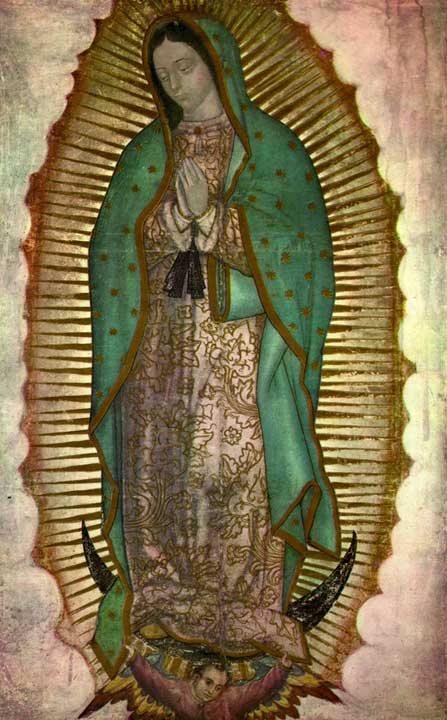
Lady of Guadalupe — Presentation Transcript
1. Discoveries about the tilma of the Virgin of Guadalupe Empress of America Andre Fernando Garcia click anywhere on page to continue
2. Would you like to read something that will not only surprise you, but change your way of thinking forever? Then, read what science has discovered about the tilma of the Virgin of Guadalupe:
3. 1. Ophthalmalgic studies made on the eyes of Mary detected that when the eye is exposed to light, the retina contracts, and when the light is withdrawn, it returns to a dilated state, just as happens with a living eye.
4. 2. The temperature of Juan Diego’s tilma, made of a material that comes from fibers of the maguey cactus, maintains a constant temperature of 98.6 degrees, the same as that of a living human body.
5. 3. One of the doctors who analyzed the tilma placed his stethoscope below the black band at Mary’s waist, and heard rhythmic beats at 115 pulses per minute, the same as that of a baby in the maternal womb.
6. 4. No sign of paint has been discovered on the tilma. From a distance of 3-4 inches from the image, one can see only the maguey cactus fibers of the material: the colors disappear. Scientific studies have not been able to discover the origin of the coloration, nor the way the image was painted. They cannot detect vestiges of brush strokes or any other known painting technique. NASA scientists confirm that the paint material does not belong to any known element on earth.
7. 5. When the material was examined under a laser ray, it was shown that there is no coloration on the front or the back of the cloth, and that the colors hover at a distance of 3/10 th of a millimeter (1/100 th of an inch) over the cloth, without touching it. The colors actually float above the surface of the tilma. Isn’t that amazing?
8. 6. The rough material of the tilma has a lifespan of no more than 20-30 years. Several centuries ago, a replica of the image was painted on an identical piece of maguey cloth, and it disintegrated after several decades. Nonetheless, during the almost 500 years of the miracle, the cloth with the image of Mary remains as strong as it was on the first day. Science cannot explain why the material has not disintegrated.
9. 7. In the year 1791, muriatic acid accidentally spilled on the upper right side of the tilma. During the period of 30 days, without any special treatment, the affected fabric re-constituted itself miraculously.
10. 8. The stars that appear on the Mantle of Mary reflect the exact configuration and positions that could be seen in the sky of Mexico on the day the miracle happened.
11. On the right side of the Virgin’s mantle, the southern constellations are indicated: At the top are four stars that form part of the Orphiuchus constellation. Below it to the left, one finds Libra , and to its right, at what seems an arrow point, is the beginning of Scorpio. In the middle are the constellations of Lupus and to its left, an end point of Hydra . Further down, one can clearly see the Southern Cross ; above it appears the slightly inclined square of the Centaurus constellation.
12. On the left side of the Virgin’s mantle one sees the northern constellations: At her shoulder, a fragment of the stars of the Herdsman constellation; below it and to the left is the Great Bear . To its right is Berenice’s Hair ; below it, Hunting Dogs , and to its left, the Thuban , which is the brightest star of the Draco constellation. Below the two parallel stars (which still form part of the Big Bear), one finds stars from another pair of constellations: the Auriga and at the bottom, three stars of Taurus . Thus, in their totality and proper places, the 46 most brilliant stars that can be seen on the horizon of the Valley of Mexico are identified.
13. 9. In the year 1921, a man concealed a high power bomb in a flower arrangement, and placed it at the feet of the tilma. The explosion destroyed everything around it, except for the tilma, which remained intact.
14. 10. Scientists discovered that the eyes of Mary have the three refractive characteristics of a human eye.
15. 11. In the eyes of Mary (only about 1/3 rd inch in size), miniscule human figures were discovered that no artist could have painted. The same scene is repeated in each eye. Using digital technology, the images in the eyes were enlarged many times, revealing that each eye reflected the figure of the Indian Juan Diego opening his tilma in front of Bishop Zumarraga. Do you know the size of this scene? One fourth of a millimeter (1/100 th of an inch).
16. It is evident that all these unexplainable things were given to us for a reason: To catch our attention. Have they caught yours?
17. To close, let us look at three surprising facts: 1. In the Indian language, “Guadalupe” means to “crush the head of the serpent.†It properly refers to Genesis 3:15: Mary, the conqueror of evil. 2. The image also depicts a detail from Apocalypse 12: “And a great sign appeared in Heaven: A woman clothed with the sun and the moon under her feet.†3. The Virgin wears a black band at her waist, which symbolizes pregnancy, to indicate that God wanted Jesus to be born in the three Americas, in the heart of each American. “ While I live I will praise the Lord: I will sing praise unto my God while I have any being†(Ps 146:2).
18. This presentation has the single purpose of demonstrating to you that the Virgin will be with you always, whenever you need her, that she will never abandon you, and that you will always be her special son or daughter. Never forget the words she spoke to Juan Diego : My little child, the smallest of all, let nothing afflict you. Do you not know that you are in my lap? Am I not here, I, who am your mother?
Tags: Guadalupe Presentation Transcript, Indian Juan Diego, mexico, mother, NASA, our lady of guadalupe, science
This entry was posted on Thursday, December 12th, 2013 at 1:45 am
You can follow any responses to this entry through the RSS 2.0 feed.
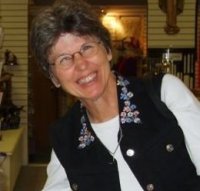
Teresa Monaghen, of Pro Sanctity and Fr. John Sianchuck, C.Ss.R., a Ukranian Byzantine priest do a great job of explaining the Western and Eastern understanding of this great mystery.
Take a listen to the discussion posted above, that Bruce and I had with Teresa Monaghen, from Pro Sanctity and Fr. John Sianchuk, C.Ss.R., a Ukrainian Redemptorist priest discuss the difference and similarities of Western and Eastern understanding of the Immaculate Conception of the Blessed Virgin Mary
[powerpress]
From the Catechism of the Catholic Church on the Immaculate Conception,Â
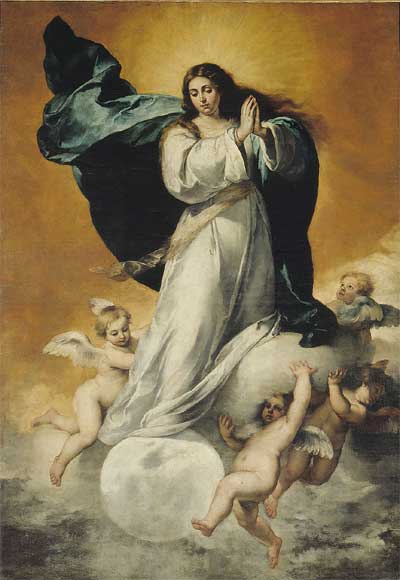 “490 To become the mother of the Savior, Mary “was enriched by God with gifts appropriate to such a role.”132 The angel Gabriel at the moment of the annunciation salutes her as “full of grace”.133 In fact, in order for Mary to be able to give the free assent of her faith to the announcement of her vocation, it was necessary that she be wholly borne by God’s grace.
“490 To become the mother of the Savior, Mary “was enriched by God with gifts appropriate to such a role.”132 The angel Gabriel at the moment of the annunciation salutes her as “full of grace”.133 In fact, in order for Mary to be able to give the free assent of her faith to the announcement of her vocation, it was necessary that she be wholly borne by God’s grace.
491 Through the centuries the Church has become ever more aware that Mary, “full of grace” through God,134 was redeemed from the moment of her conception. That is what the dogma of the Immaculate Conception confesses, as Pope Pius IX proclaimed in 1854:
- The most Blessed Virgin Mary was, from the first moment of her conception, by a singular grace and privilege of almighty God and by virtue of the merits of Jesus Christ, Savior of the human race, preserved immune from all stain of original sin.135
 492 The “splendor of an entirely unique holiness” by which Mary is “enriched from the first instant of her conception” comes wholly from Christ: she is “redeemed, in a more exalted fashion, by reason of the merits of her Son”.136 The Father blessed Mary more than any other created person “in Christ with every spiritual blessing in the heavenly places” and chose her “in Christ before the foundation of the world, to be holy and blameless before him in love”.137
493 The Fathers of the Eastern tradition call the Mother of God “the All-Holy” (Panagia), and celebrate her as “free from any stain of sin, as though fashioned by the Holy Spirit and formed as a new creature”.138 By the grace of God Mary remained free of every personal sin her whole life long. ”
  This video does a nice job of tracking the history of the dogma
Tags: angel gabriel, ark of the covenant, blessed virgin mary, catechism of the catholic church, dogma of the immaculate conception, eastern tradition, immaculate conception, John Sianchuk, mary full of grace, mother of god, new ark, new creature, pope pius ix, sin, singular grace, teresa monaghen
This entry was posted on Monday, December 9th, 2013 at 12:08 am
You can follow any responses to this entry through the RSS 2.0 feed.
 Mike Aquilina give us an overview of the great saints life and impact on the Church
Mike Aquilina give us an overview of the great saints life and impact on the Church
[powerpress]
St. John of Damascus, not only taught that icons and other sacred artworks are permissible because they point to the incarnation of Jesus, but he also understood the rich value of every word to do the same. He is considered one of the Church’s most gifted poets. Every sacred image, whether in art, hymn, poetry can be a prayer that leads us deeper into the heart of God.
The St. John Damascus site contains many of his writings…it’s fantastic!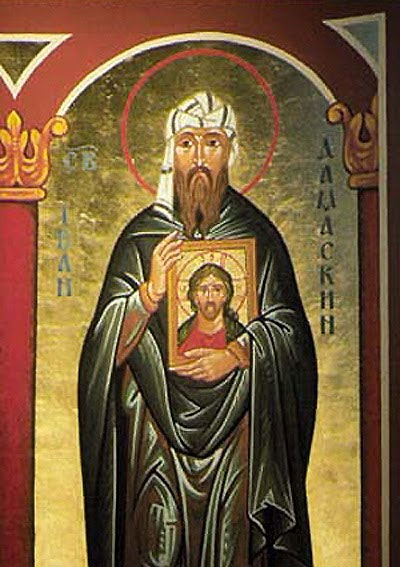
“RIGHTEOUS JOHN OF DAMASCUS. He was raised in Damascus, Syria, the capital of the Moslem world. When he was ten years of age, his father found a learned monk in the secular studies as well as music and theology. He instructed John and his adopted brother, Cosmas, and John made great progress in theology. At last, the monk departed saying to their father, Sergius, that his sons had become remarkably wise. Sergius soon died, and John was chosen for his office of counselor to the caliph.
During this time, John wrote convincingly against the iconoclasts and Leo the Armenian, as well as the Moslems. He effectively used deductive arguments, history, and parables of the saints. Against the iconoclasts, he argued that since the shadows and handkerchiefs of the apostles healed the sick, why was it not appropriate to venerate their icons. His letters were circulated to strengthen and prepare the people to answer the attacks of the heretics. Seeing this, the emperor wrote a letter in John’s hand that had him condemned to the caliph for whom he worked. The caliph had his right hand cut off and hung in the market place. That night, John recovered his hand and prayed before an icon of the Theotokos, called of the three hands, promising that he would write hymns for Orthodoxy if he were healed. He slept, and she told him that he was healed and to write. The caliph freed him, and he became a humble monk. He wrote canons, troparia, idiomela, festal homilies for feast days of Jesus and the Theotokos, the saints and prophets. He established the Typikon, the order of services. He became the mouth piece of all the bishops of the east. He died peacefully at 104 years of age.” – from the St. John of Damascus Institute site – for a longer account go there
Spiritual Writings:
Exposition of the Faith
The video contains some of St. John Damascus’ teachings on the Blessed Virgin Mary
A Prayer of St. John of Damascus
I stand before the gates of thy Temple, and yet I refrain not from my evil thoughts. But do thou, O Christ my God, who didst justify the publican, and hadst mercy on the Canaanite woman, and opened the gates of Paradise to the thief; open unto me the compassion of thy love toward mankind, and receive me as I approach and touch thee, like the sinful woman and the woman with the issue of blood; for the one, by embracing thy feet received the forgiveness of her sins, and the other by but touching the hem of thy garment was healed. And I, most sinful, dare to partake of thy whole Body. Let me not be consumed but receive me as thou didst receive them, and enlighten the perceptions of my soul, consuming the accusations of my sins; through the intercessions of Her that without stain gave Thee birth, and of the heavenly Powers; for thou art blessed unto ages of ages. Amen.
Tags: art, Church, father, fathers mike, icons, john of damascus, mike aquilina, sacred image, secular studies, st john of damascus
This entry was posted on Wednesday, December 4th, 2013 at 12:34 am
You can follow any responses to this entry through the RSS 2.0 feed.
What a joy to talk about the saints with Paul Thigpen. and discuss this INCREDIBLE book! Not just an ascetically gorgeous work, worthy of the 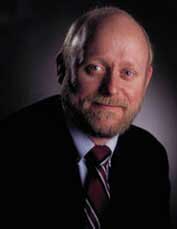 mystery it contains, but “A Year With the Saints: Daily Meditations with the Holy Ones of God” is filled with guided meditations, teachings, and prayers with the “Great Cloud of Witnesses”. Dr. Thigpen, who earned his PhD in Church History, also guides through a wonderful catechesis of the faith through these “love letters” from history.  The perfect gift…period.
mystery it contains, but “A Year With the Saints: Daily Meditations with the Holy Ones of God” is filled with guided meditations, teachings, and prayers with the “Great Cloud of Witnesses”. Dr. Thigpen, who earned his PhD in Church History, also guides through a wonderful catechesis of the faith through these “love letters” from history.  The perfect gift…period.
In this conversation, we discuss many topics, including:
Why the saints? Do we need them? How can they help us grow in faith?
[powerpress]
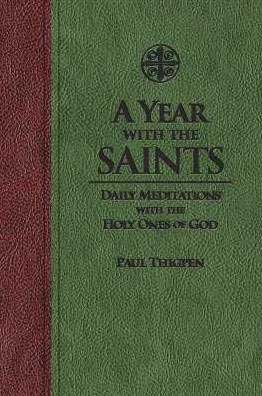 You can find the book here
You can find the book here
“Those who follow the saints”, said Pope Clement I, “will themselves become saints”. Their words and deeds provide a treasury of time-tested wisdom, encouragement, and inspiration for the pursuit of holiness.
Best-selling Catholic author Paul Thigpen opens up that treasury in A Year With the Saints: Daily Meditations With the Holy Ones of God. These 365 reflections draw from the writings and lives of holy men and women across two thousand years. Their spiritual and practical insights for Christian living are as fresh and relevant today as they were when they were first written.
Tags: faith, paul thigpen, saints, work
This entry was posted on Wednesday, November 27th, 2013 at 8:06 am
You can follow any responses to this entry through the RSS 2.0 feed.
Dr. Matthew Bunson discusses the life, times and teachings of St. Jerome
[powerpress]
Jerome
-Â Letters
-Â The Perpetual Virginity of Blessed Mary
-Â To Pammachius Against John of Jerusalem
-Â The Dialogue Against the Luciferians
-Â The Life of Malchus, the Captive Monk
-Â The Life of S. Hilarion
-Â The Life of Paulus the First Hermit
-Â Against Jovinianus
-Â Against Vigilantius
-Â Against the Pelagians
-Â Prefaces
-Â De Viris Illustribus (Illustrious Men)
-Â Apology for himself against the Books of Rufinus
Jerome was born into a Christian family in about 347 A.D. in Stridon. He was given a good education and was even sent to Rome to fine-tune his studies. As a young man he was attracted by the worldly life (cf. Ep 22, 7), but his desire for and interest in the Christian religion prevailed.
He received Baptism in about 366 and opted for the ascetic life. He went to Aquileia and joined a group of fervent Christians that had formed around Bishop Valerian and which he described as almost “a choir of blesseds” (Chron. ad ann. 374). He then left for the East and lived as a hermit in the Desert of Chalcis, south of Aleppo (Ep 14, 10), devoting himself assiduously to study. He perfected his knowledge of Greek, began learning Hebrew (cf. Ep 125, 12), and transcribed codices and Patristic writings (cf. Ep 5, 2). Meditation, solitude and contact with the Word of God helped his Christian sensibility to mature. He bitterly regretted the indiscretions of his youth (cf. Ep. 22, 7) and was keenly aware of the contrast between the pagan mentality and the Christian life: a contrast made famous by the dramatic and lively “vision” – of which he has left us an account – in which it seemed to him that he was being scourged before God because he was “Ciceronian rather than Christian” (cf. Ep. 22, 30).In 382 he moved to Rome: here, acquainted with his fame as an ascetic and his ability as a scholar, Pope Damasus engaged him as secretary and counsellor; the Pope encouraged him, for pastoral and cultural reasons, to embark on a new Latin translation of the Biblical texts. Several members of the Roman aristocracy, especially noblewomen such as Paula, Marcella, Asella, Lea and others, desirous of committing themselves to the way of Christian perfection and of deepening their knowledge of the Word of God, chose him as their spiritual guide and teacher in the methodical approach to the sacred texts. These noblewomen also learned Greek and Hebrew.
After the death of Pope Damasus, Jerome left Rome in 385 and went on pilgrimage, first to the Holy Land, a silent witness of Christ’s earthly life, and then to Egypt, the favourite country of numerous monks (cf. Contra Rufinum, 3, 22; Ep. 108, 6-14). In 386 he stopped in Bethlehem, where male and female monasteries were built through the generosity of the noblewoman, Paula, as well as a hospice for pilgrims bound for the Holy Land, “remembering Mary and Joseph who had found no room there” (Ep. 108, 14).
He stayed in Bethlehem until he died, continuing to do a prodigious amount of work: he commented on the Word of God; he defended the faith, vigorously opposing various heresies; he urged the monks on to perfection; he taught classical and Christian culture to young students; he welcomed with a pastor’s heart pilgrims who were visiting the Holy Land. He died in his cell close to the Grotto of the Nativity on 30 September 419-420.
Jerome’s literary studies and vast erudition enabled him to revise and translate many biblical texts: an invaluable undertaking for the Latin Church and for Western culture. On the basis of the original Greek and Hebrew texts, and thanks to the comparison with previous versions, he revised the four Gospels in Latin, then the Psalter and a large part of the Old Testament. Taking into account the original Hebrew and Greek texts of the Septuagint, the classical Greek version of the Old Testament that dates back to pre-Christian times, as well as the earlier Latin versions, Jerome was able, with the assistance later of other collaborators, to produce a better translation: this constitutes the so-called “Vulgate”, the “official” text of the Latin Church which was recognized as such by the Council of Trent and which, after the recent revision, continues to be the “official” Latin text of the Church. It is interesting to point out the criteria which the great biblicist abided by in his work as a translator. He himself reveals them when he says that he respects even the order of the words of the Sacred Scriptures, for in them, he says, “the order of the words is also a mystery” (Ep. 57, 5), that is, a revelation. Furthermore, he reaffirms the need to refer to the original texts: “Should an argument on the New Testament arise between Latins because of interpretations of the manuscripts that fail to agree, let us turn to the original, that is, to the Greek text in which the New Testament was written. “Likewise, with regard to the Old Testament, if there are divergences between the Greek and Latin texts we should have recourse to the original Hebrew text; thus, we shall be able to find in the streams all that flows from the source” (Ep. 106, 2). Jerome also commented on many biblical texts. For him the commentaries had to offer multiple opinions “so that the shrewd reader, after reading the different explanations and hearing many opinions – to be accepted or rejected – may judge which is the most reliable, and, like an expert moneychanger, may reject the false coin” (Contra Rufinum 1, 16).
Jerome refuted with energy and liveliness the heretics who contested the tradition and faith of the Church. He also demonstrated the importance and validity of Christian literature, which had by then become a real culture that deserved to be compared with classical literature: he did so by composing his De Viris Illustribus, a work in which Jerome presents the biographies of more than a hundred Christian authors. Further, he wrote biographies of monks, comparing among other things their spiritual itineraries as well as monastic ideal. In addition, he translated various works by Greek authors. Lastly, in the important Epistulae, a masterpiece of Latin literature, Jerome emerges with the profile of a man of culture, an ascetic and a guide of souls.
What can we learn from St Jerome? It seems to me, this above all; to love the Word of God in Sacred Scripture. St Jerome said: “Ignorance of the Scriptures is ignorance of Christ”. It is therefore important that every Christian live in contact and in personal dialogue with the Word of God given to us in Sacred Scripture. This dialogue with Scripture must always have two dimensions: on the one hand, it must be a truly personal dialogue because God speaks with each one of us through Sacred Scripture and it has a message for each one. We must not read Sacred Scripture as a word of the past but as the Word of God that is also addressed to us, and we must try to understand what it is that the Lord wants to tell us. However, to avoid falling into individualism, we must bear in mind that the Word of God has been given to us precisely in order to build communion and to join forces in the truth on our journey towards God. Thus, although it is always a personal Word, it is also a Word that builds community, that builds the Church. We must therefore read it in communion with the living Church. The privileged place for reading and listening to the Word of God is the liturgy, in which, celebrating the Word and making Christ’s Body present in the Sacrament, we actualize the Word in our lives and make it present among us. We must never forget that the Word of God transcends time. Human opinions come and go. What is very modern today will be very antiquated tomorrow. On the other hand, the Word of God is the Word of eternal life, it bears within it eternity and is valid for ever. By carrying the Word of God within us, we therefore carry within us eternity, eternal life.
I thus conclude with a word St Jerome once addressed to St Paulinus of Nola. In it the great exegete expressed this very reality, that is, in the Word of God we receive eternity, eternal life. St Jerome said: “Seek to learn on earth those truths which will remain ever valid in Heaven” (Ep. 53, 10).
For more visit Vatican.va
Dr. Matthew Bunson, Senior Fellow of the St. Paul Center for Biblical Theology, is one of the United States’ leading authorities on the papacy and the Church.
His books include: The Encyclopedia of Catholic History; The Encyclopedia of Saints; Papal Wisdom; All Shall Be Well; Encyclopedia of the Roman Empire; and The Angelic Doctor: The Life and World of St. Thomas Aquinas; The Pope Encyclopedia; We Have a Pope! Benedict XVI, the first Catholic biography of the Holy Father in the English language; the Encyclopedia of U.S. Catholic History; Pope Francis. His also the editor of OSV’s “The Catholic Answer” magazine.
Tags: catholic, catholic podcast, catholic prayer, cathollc spirituality, Church, matthew bunson, sacred scripture, St Jerome
This entry was posted on Monday, November 25th, 2013 at 9:53 am
You can follow any responses to this entry through the RSS 2.0 feed.
The story and history of Saint Clement.
![]() First, start with the podcast above featuring the son of the Fathers, Mike Aquilina talking about St. Clement, then…
First, start with the podcast above featuring the son of the Fathers, Mike Aquilina talking about St. Clement, then…
Clemens Romanus was born in Rome in Italy during the time that the Christian faith was being spread and Christians were being persecuted by the Roman Emperors. He is believed to be of Jewish descent and a freeman of Rome. He worked as a tanner
during the early part of his life. He was then converted to Christianity and became a disciple of St. Peter and of St. Paul. Following the death of Saint Peter he took over his position and became the fourth Pope and Bishop of Rome continuing to convert Romans from the religion of the old Roman gods to Christianity.
Saint Clement was banished from Rome during the reign of the Emperor Trajan (September 18, 53 – August 9, 117) due to his beliefs and unpopularity with the Roman rabble. He was banished to Chersonesus, which was an ancient Greek colony under Roman rule, in the south western part of Crimea (part of the Ukraine). In Chersonesus he was sentenced to work with other prisoners in a sto
ne quarry where he continued to convert people. The number and success of his conversions attracted the attention of the Roman prefect who sentenced him to death. Clement was he was bound to an anchor and cast into the sea. He died in A.D.100.
How blessed and amazing are God’s gifts, dear friends Life with immortality, splendor with righteousness, truth with confidence, faith with assurance, self-control with holiness And all these things are within our comprehension. Clement of Rome

Basilica of Saint Clement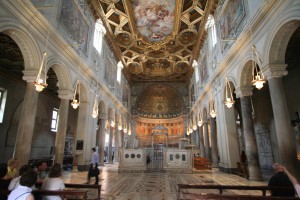
The Basilica di San Clemente is an early Christian basilica in Rome dedicated to Pope St. Clement. Its beautiful interior is especially notable for its three historical layers.
The main upper church is one of the most richly decorated churches in Rome. The vast majority of its architecture and art dates from its construction in the early 12th century. The entrance is on the left aisle.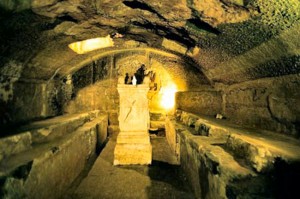
The most striking sight is the 12th-century apse mosaic, in a golden-bronze color and featuring a large cross in the center. In the center of the apse is a throne, whose back is part of a martyr’s tomb.
The high altar contains the relics of St. Clement of Rome and St. Ignatius of Antioch. Faded frescoes decorate many of the walls, and date from the 6th to 11th centuries. They depict New Testament scenes and lives of several saints.
Tags: basilica di san clemente, Church, churches in rome, clement of rome, emperor trajan, father of the church, fathers mike, mike aquilina, rome, saint clement, st clement of rome
This entry was posted on Saturday, November 23rd, 2013 at 12:02 am
You can follow any responses to this entry through the RSS 2.0 feed.
Dr. Matthew Bunson discusses the life, times and teachings of St. Augustine of Hippo (part 2)
[powerpress]
Augustine of Hippo [
-Â Confessions
-Â Letters
-Â City of God
-Â Christian Doctrine
-Â On the Holy Trinity
-Â The Enchiridion
-Â On the Catechising of the Uninstructed
-Â On Faith and the Creed
-Â Concerning Faith of Things Not Seen
-Â On the Profit of Believing
-Â On the Creed: A Sermon to Catechumens
-Â On Continence
-Â On the Good of Marriage
-Â On Holy Virginity
-Â On the Good of Widowhood
-Â On Lying
-Â To Consentius: Against Lying
-Â On the Work of Monks
-Â On Patience
-Â On Care to be Had For the Dead
-Â On the Morals of the Catholic Church
-Â On the Morals of the Manichaeans
-Â On Two Souls, Against the Manichaeans
-Â Acts or Disputation Against Fortunatus the Manichaean
-Â Against the Epistle of Manichaeus Called Fundamental
-Â Reply to Faustus the Manichaean
-Â Concerning the Nature of Good, Against the Manichaeans
-Â On Baptism, Against the Donatists
-Â Answer to Letters of Petilian, Bishop of Cirta
-Â Merits and Remission of Sin, and Infant Baptism
-Â On the Spirit and the Letter
-Â On Nature and Grace
-Â On Man’s Perfection in Righteousness
-Â On the Proceedings of Pelagius
-Â On the Grace of Christ, and on Original Sin
-Â On Marriage and Concupiscence
-Â On the Soul and its Origin
-Â Against Two Letters of the Pelagians
-Â On Grace and Free Will
-Â On Rebuke and Grace
-Â The Predestination of the Saints/Gift of Perseverance
-Â Our Lord’s Sermon on the Mount
-Â The Harmony of the Gospels
-Â Sermons on Selected Lessons of the New Testament
-Â Tractates on the Gospel of John
-Â Homilies on the First Epistle of John
-Â Soliloquies
-Â The Enarrations, or Expositions, on the Psalms
After his Baptism, Augustine decided to return to Africa with his friends, with the idea of living a community life of the monastic kind at the service of God. However, while awaiting their departure in Ostia, his mother fell ill unexpectedly and died shortly afterwards, breaking her son’s heart. Having returned to his
homeland at last, the convert settled in Hippo for the very purpose of founding a monastery. In this city on the African coast he was ordained a priest in 391, despite his reticence, and with a few companions began the monastic life which had long been in his mind, dividing his time between prayer, study and preaching. All he wanted was to be at the service of the truth. He did not feel he had a vocation to pastoral life but realized later that God was calling him to be a pastor among others and thus to offer people the gift of the truth. He was ordained a Bishop in Hippo four years later, in 395. Augustine continued to deepen his study of Scripture and of the texts of the Christian tradition and was an exemplary Bishop in his tireless pastoral commitment: he preached several times a week to his faithful, supported the poor and orphans, supervised the formation of the clergy and the organization of mens’ and womens’ monasteries. In short, the former rhetorician asserted himself as one of the most important exponents of Christianity of that time. He was very active in the government of his Diocese – with remarkable, even civil, implications – in the more than 35 years of his Episcopate, and the Bishop of Hippo actually exercised a vast influence in his guidance of the Catholic Church in Roman Africa and, more generally, in the Christianity of his time, coping with religious tendencies and tenacious, disruptive heresies such as Manichaeism, Donatism and Pelagianism, which endangered the Christian faith in the one God, rich in mercy.
And Augustine entrusted himself to God every day until the very end of his life: smitten by fever, while for almost three months his Hippo was being besieged by vandal invaders, the Bishop – his friend Possidius recounts in his Vita Augustini - asked that the penitential psalms be transcribed in large characters, “and that the sheets be attached to the wall, so that while he was bedridden during his illness he could see and read them and he shed constant hot tears” (31, 2). This is how Augustine spent the last days of his life. He died on 28 August 430, when he was not yet 76. We will devote our next encounters to his work, his message and his inner experience.
For more visit Vatican.va
Dr. Matthew Bunson, Senior Fellow of the St. Paul Center for Biblical Theology, is one of the United States’ leading authorities on the papacy and the Church.
His books include: The Encyclopedia of Catholic History; The Encyclopedia of Saints; Papal Wisdom; All Shall Be Well; Encyclopedia of the Roman Empire; and The Angelic Doctor: The Life and World of St. Thomas Aquinas; The Pope Encyclopedia; We Have a Pope! Benedict XVI, the first Catholic biography of the Holy Father in the English language; the Encyclopedia of U.S. Catholic History; Pope Francis. His also the editor of OSV’s “The Catholic Answer” magazine.
Tags: beauty, Church, matthew bunson, mother, old testament, truth
This entry was posted on Monday, November 18th, 2013 at 3:17 pm
You can follow any responses to this entry through the RSS 2.0 feed.
As if Already in Eternity: The Wisdom of Blessed Elisabeth of the Trinity (as found on Anthony’s “Beginning to Pray” blog site)
Blessed Elisabeth of the Trinity is a witness to the primacy of contemplation in the life of the Church and the mystical wisdom contemplation releases into human history. Â This is the wisdom that understands how God is present in both the public square as well as in the intimacy of our hearts. Â Today, when the whole world needs this wisdom renewed, the Church celebrates her feast day and invites us to consider her powerful spiritual doctrine.
She wrote a famous prayer to the Holy Trinity that has helped many contemplatives recover devotion to the Divine Persons in their life of prayer.  This work is cited to support the  Catechism of the Catholic Church’s teaching on the Divine Works and the Trinitarian Missions.  The teaching itself is that God calls every individual to a great and beautiful purpose, to become a dwelling place for His presence in the world:
The ultimate end of the divine economy is the entry of God’s creatures into the perfect unity of the Blessed Trinity. Â But even now we are called to be a dwelling for the Most Holy Trinity, ‘If a man loves me,’ says the Lord, ‘he will keep my word, and my Father will love him, and we will come to him, and make our home with him’ (CCC 260).
This is a rich teaching because it says that our ultimate fulfillment is not simply something waiting for us in a remote future, in a distant afterlife. Â Instead, the Catechism proposes that heaven can begin now in faith. Â This means that our faith offers us a fullness of life. Â We do not have to be content with managing through life’s ambiguities and uncertainties with the hope that someday it might get better. Â Instead, our faith gives us a real foretaste of the fullness that awaits us — so that the excessiveness of God’s love can pour into our lives here and now, if we will believe in Him.
To encourage this decision to believe in the love that God has for us in the here and now of our lives, the Catechism cites the beginning of Blessed Elisabeth’s prayer to the Trinity, “O my God, Trinity whom I adore, help me to forget myself entirely so to establish myself in you, unmovable and peaceful as if my soul were already in eternity.”
Blessed Elisabeth’s prayer helps us consider what it means to have faith, to believe in God and what He calls us to become. Â This kind of faith is a matter of a love that takes us out of ourselves. It is, in this sense, an ecstatic movement of heart, a decision to lay aside everything so that there is space for God to dwell in us. Â Faith helps us see that our own bloated egos need to make way for God. Â To love Christ to the point of welcoming His word in our hearts means He can begin to help us forget our very self. Â He is the One who frees us so that the fullness of life that awaits us in heaven begins here on earth.
Her words suggest that the biggest obstacle to prayer is not anything outside ourselves, but proclivities within. Â The ego has its own specific gravity. Â Its force, if left unchecked, its deadly. Â Anxieties over our own plans and for security, our lust for control and to put others in their place, our need to be right and esteemed, our obsession with being liked or affirmed, our gluttony for comfort and entertainment; all of this fails to provide any firm ground for rectifying our existence. Â Unchecked, these tendencies suffocate the heart, and as long as one’s heart is pulled by these forces, it can find no peace.
Only when we can get out of ourselves are we able to breath the fresh air of friendship with God and true solidarity with one
another. Â At the same time, even after we see how imprisoned we are, left to our own resources, we cannot entirely free ourselves. Â The answer is not to be found in our own cleverness or in some Titanic effort to surmount oneself through techniques. Â Only Christ can help us leave our old way of life behind. Â This is why Blessed Elisabeth’s prayer begins with a cry for help.
Clinging to what Christ has revealed about the Father and about humanity, this is the essential movement of faith. Â This is His word to us – for He is the saving Word that reveals this inexhaustible mystery. Â Those whose hearts are vulnerable to this radiant beauty find true inner freedom.
Souls whom Christ helps to be free of themselves stand firm in love even as everything in life falls apart around them. Â This is only because through Christ they have found the ground of their very being in the excessive love flowing from the Holy Trinity into their nights, their voids, their inadequacies and even their failures. Â In short, come what come may they know they are loved and that love awaits them.
It by standing on this ground that a soul opens itself to God’s presence in ever new and surprising ways. Â On this ground, He dwells in them. Â With the inflow of His truth and love, it is easy to let go and to trust, and anyone who has discovered this freedom wants to be established there in an unmovable way.
Today is the feast of Blessed Elisabeth of the Trinity. Â She lived out this truth to her last anguished heartbeat, bedridden with an incurable disease even as the political powers of her day threatened those she loved the most and the Church was rocked by all kinds of scandal. Â This Carmelite Mystic, the Mystic of Dijon, believed her mission was to help souls enter to a transforming encounter with Christ, one that requires a journey out of ourselves where we are vulnerable enough to be touched by Him. Her words encourage us to call out to the Word, and to let His great Canticle of love resound in our hearts with all its fulness — for to know this saving truth is to live as if already in eternity.
Tags: Anthony Lilles, Blessed Elisabeth, faith, love
This entry was posted on Monday, November 11th, 2013 at 12:13 am
You can follow any responses to this entry through the RSS 2.0 feed.
Although she lived on for twenty-six years, Blessed Elizabeth of the Trinity had an extraordinary sense of the three persons of the Trinity dwelling within her.
John Murray PP tells her story:
They were almost contemporaries, both of whom followed the way of Carmel. While Thérese Martin gave the world her ‘little way’, Elizabeth Catez was truly the ‘prophet of the presence of God’. When Pope John Paul beatified her on 25 November 1984, he presented her to the Church as one ‘who led a life hidden with Christ in God’.
A terror or a saint!
However, Blessed Elizabeth of the Trinity, who was born in France in 1880, did not have such auspicious beginnings. ‘You will either be a terror or a saint,’ her mother had said. The stubborn little girl who often demanded her way, had inherited the military spirit of her ancestors. Her father Joseph had enlisted in the French army and had a successful military career, receiving even the Legion of Honour in 1881.
After the early death of her father, Elizabeth’s outbursts of anger increased. However once she experienced for the first time the sacrament of Penance, it brought about what she styled her ‘conversion’. She henceforth began to struggle noticeably against her violent temper.
In the spring of 1891, when she was almost eleven years old, Elizabeth made her First Communion. She was profoundly affected by her first reception of Christ in the sacrament of the Eucharist. Her mother later testified, ‘From that day and afterwards there were no more fits of anger’.
Trinity
Elizabeth asked for help in understanding her interior experience – her need for silence and recollection – and her sense of an inexplicable presence in the depth of her soul. The Dominicanproceeded to deepen her awareness of the truth of the indwelling of the Trinity in the soul of the baptized: that not just Christ, but that all three of the Trinity Father, Son, and Spirit – were present in love in her soul.
As she was waiting to enter her beloved Carmel, Elizabeth lived the life of a typical young, active Catholic laywoman of her time. She sang in two choirs in her parish; she helped prepare children for their First Communions, and she animated a type of ‘day care’ for the children of those who worked in the local factory.
The personality of this energetic young woman had blossomed from her earlier years. It should be noted that Elizabeth was also a very gifted musician who could have made a career with her talent. From the age of seven, she studied music at the Conservatory of Dijon, winning several prizes for her skill at the piano. ‘No one can interpret the great masters like Elizabeth,’ wrote one admirer.Home at last
At last Elizabeth entered the Carmel. There she was home. As a Carmelite she received the name of Sister Elizabeth of the Trinity and made her profession on the Feast of Epiphany, 1902. From reading St. Paul, her great scriptural mentor, Sister Elizabeth discovered her vocation. She would be a ‘Praise of Glory’ or Laudem Gloria praising God dwelling within her offering a ceaseless ‘Sanctus’.‘God dwells within you, do not leave Him so often,’ she advised. To another she wrote, ‘It is wonderful to recall that, except for the vision of seeing God, we possess God as all the Saints in Heaven do. We can surely be with Him always and no one can take us away from Him. He dwells in our souls!’ She often referred to the Blessed Trinity as ‘my Three’.
Secret for peace
As a child, Elizabeth had found the strength to conquer her fiery temper only after having received the body and blood of Christ in the Eucharist for the first time. As a Carmelite, she would read in Paul that it was Christ ‘who made peace through the blood of his Cross’ (Col.1,20), making ‘peace in my little heaven so that it may truly be the repose of the Three’.
Once she wrote to a friend, ‘I am going to give you my “secret”: think about this God who dwells within you, whose temple you are; St. Paul speaks in this way, and we can believe it.’
The call to praise the glory of God also included the call to share in the redemptive sufferings of Christ, to be able to say like St. Paul, ‘In my flesh I am filling up what is lacking in the afflictions of Christ on behalf of his body, which is the Church’ (Col 1,24) – and Sister Elizabeth had to accept suffering.
Addison’s disease
Early in 1906 it was noticed that Sister Elizabeth had become very weak. She made a retreat to prepare for the ‘Eternal Retreat’. The young Carmelite suffered for months from Addison’s Disease, a malady of the kidneys which at that time was incurable. As a result of this illness, Elizabeth suffered great fatigue, an inability to digest food, intense abdominal pains and great thirst.During the last week of her life, Sister Elizabeth’s stomach was very ulcerated, and yet she made frequent and lengthy visits to the Blessed Sacrament. On 31 October, she received the last rites. On 1 November, she made her confession and received Holy Communion for the last time. Elizabeth’s last audible words before her death were, ‘I am going to Light, to Love, to Life’.
Mission in heaven
She died on 9 November 1906, at the age of twenty-six, after having lived in Carmel for only five years. From her sick bed, Elizabeth wrote to a fellow Carmelite, ‘I think that in Heaven, my mission will be to draw souls by helping them go out of themselves to cling to God by a wholly simple and loving movement, and to keep them in this great silence within that will allow God to communicate Himself to them and transform them into Himself.’
This article first appeared in The Messenger (February 2007), a publication of the Irish Jesuits.
“Holy Trinity, Whom I Adore” a prayer of Blessed Elizabeth of the Trinity[powerpress url=”http://discerninghearts.com/Devotionals/Holy-Trinity-Whom-I-Adore.mp3″]Download (right click & choose “Save Link As”)
Holy Trinity, Whom I Adore
O my God, Trinity whom I adore, let me entirely forget myself that I may abide in You, still and peaceful as if my soul were already in eternity; let nothing disturb my peace nor separate me from You, O my unchanging God, but that each moment may take me further into the depths of Your mystery ! Pacify my soul! Make it Your heaven, Your beloved home and place of Your repose; let me never leave You there alone, but may I be ever attentive, ever alert in my faith, ever adoring and all given up to Your creative action.
O my beloved Christ, crucified for love, would that I might be for You a spouse of Your heart! I would anoint You with glory, I would love You – even unto death! Yet I sense my frailty and ask You to adorn me with Yourself; identify my soul with all the movements of Your soul, submerge me, overwhelm me, substitute Yourself in me that my life may become but a reflection of Your life. Come into me as Adorer, Redeemer and Saviour.
O Eternal Word, Word of my God, would that I might spend my life listening to You, would that I might be fully receptive to learn all from You; in all darkness, all loneliness, all weakness, may I ever keep my eyes fixed on You and abide under Your great light; O my Beloved Star, fascinate me so that I may never be able to leave Your radiance.
O Consuming Fire, Spirit of Love, descend into my soul and make all in me as an incarnation of the Word, that I may be to Him a super-added humanity wherein He renews His mystery; and You O Father, bestow Yourself and bend down to Your little creature, seeing in her only Your beloved Son in whom You are well pleased.
O my `Three’, my All, my Beatitude, infinite Solitude, Immensity in whom I lose myself, I give myself to You as a prey to be consumed; enclose Yourself in me that I may be absorbed in You so as to contemplate in Your light the abyss of Your Splendour !
Tags: Beloved Star, Blessed Elizabeth, blessed elizabeth of the trinity, carmelites, darkness, love
This entry was posted on Friday, November 8th, 2013 at 4:55 am
You can follow any responses to this entry through the RSS 2.0 feed.

